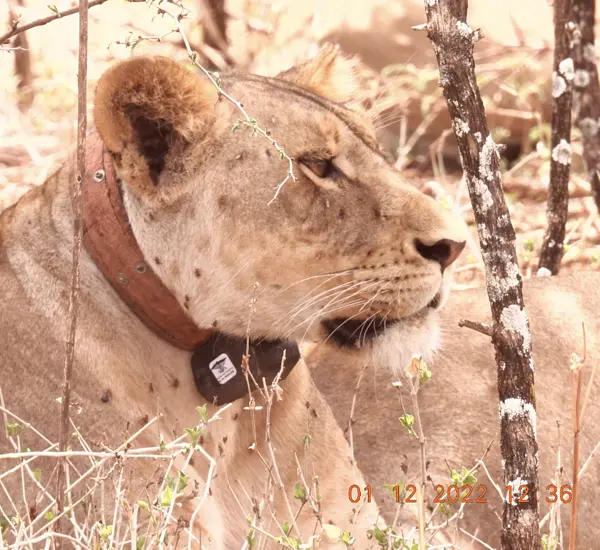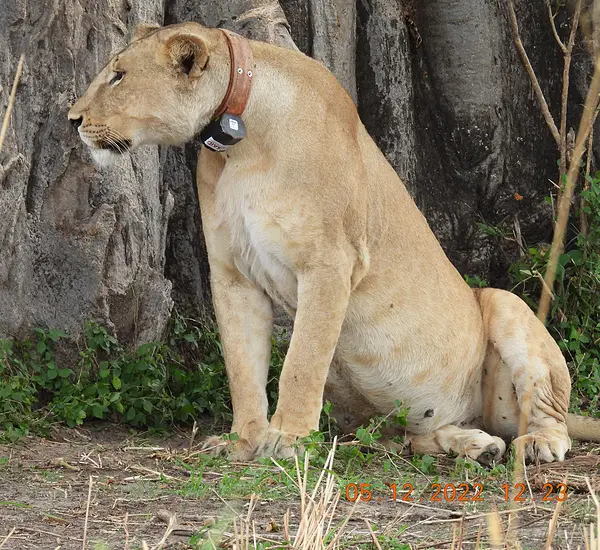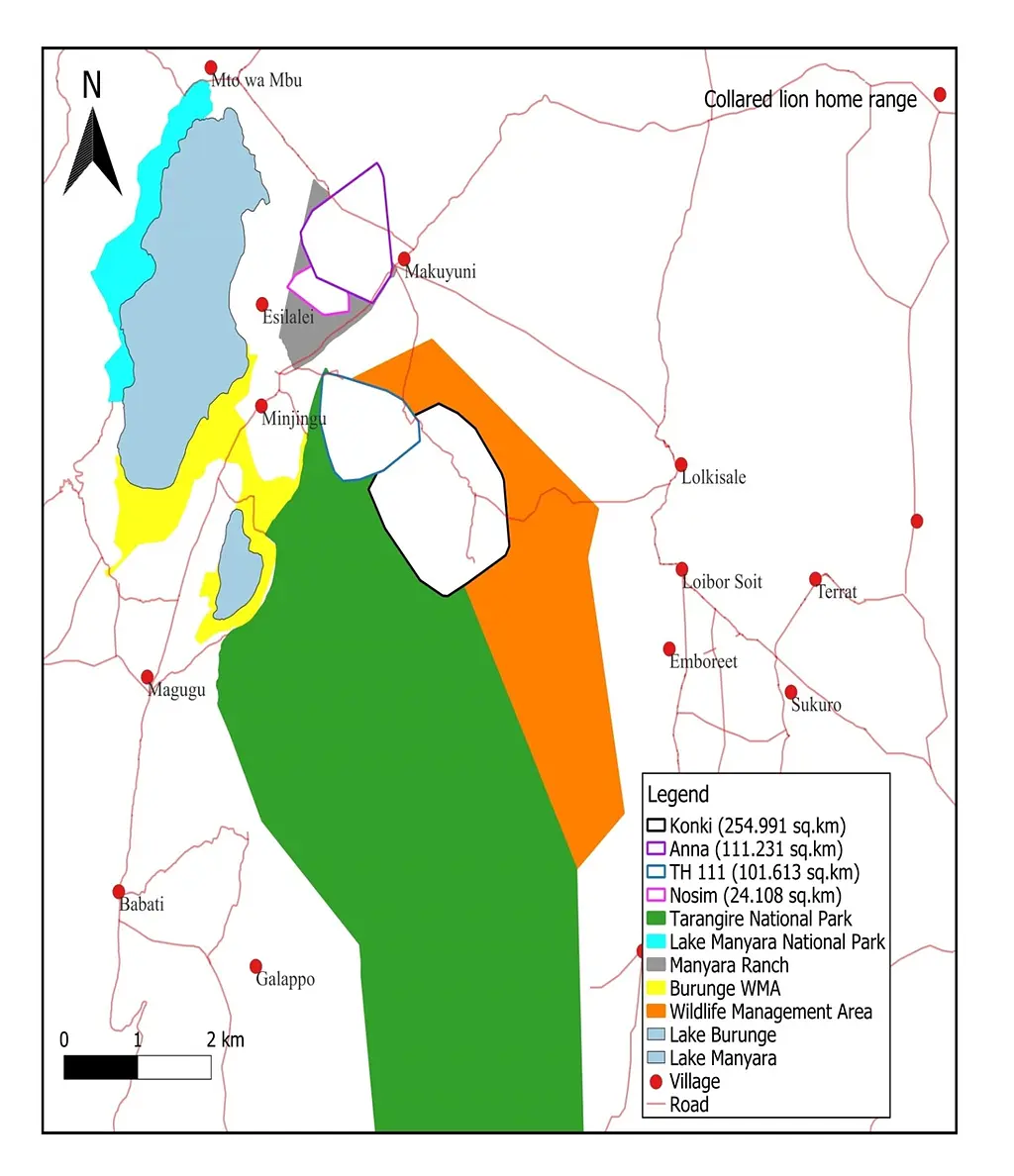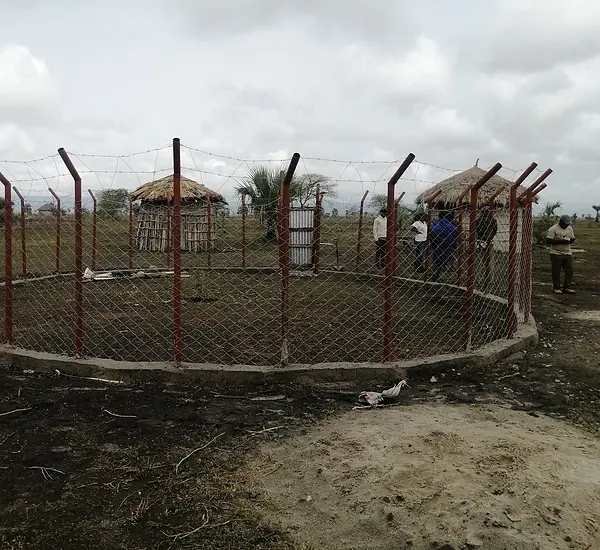Northern Tanzania encompasses Kwakuchinja Corridor, home of one of the major lion populations remaining in East Africa. A major challenge facing lion populations, specifically within the Kwakuchinja Corridor, is human wildlife conflict, or conflicts local communities face when lions are present or pass through the community areas. These conflicts can result in the loss of human life and retaliatory lion killings. Since January 2022, two people have been killed, six injured, and five lions have been killed by the community.
Collecting movement data on lions using GPS collars
One way to mitigate this conflict is to collect movement data of the lions. These data can support more effective design and integration of wildlife corridor management into the village, district, regional, and national plans. The USAID Tuhifadhi Maliasili Activity, in partnership with Asilia Giving and Tarangire Lion Project, is monitoring lion movement with the use of Geographical Positioning System (GPS) collar technology. Currently, the project is capturing data on four lions. This, along with collecting movement data from the lions, supports human-lion conflict mitigation.
The GPS collars are programmed to send alerts to a control center, which uses the data to alert the community of the presence of the lions in their locality. This helps reduce conflicts between humans and lions as well as reduce human death or injury and retaliatory killing of lions. Collaring is also important in the identification of human-lion conflict hotspot areas and the spatial-temporal pattern of conflict in the areas like grazing land and water sources, mostly used by both wildlife and humans.


Meet the Lions
Anna Olekashi is a three-year-old lioness. She is a sub-adult lioness. She is very cute and polite. Whenever you see her, she walks pole pole and majestically as Queen of the beasts. She is from the New Wazi Ranch family in Manyara Ranch.
Anna comes from a pride with nine members: three siblings, including one named Jackline (her sister) and two younger sisters (NW 54 and NW 55); one young brother (NW 56); her mothers, Farida and Glory and her fathers, named Olekashi and Lemali.
Based on the GPS data, Anna and her family spend 10% of their time in Losimingor Forest and 90% of their time on Manyara Ranch. They normally cross Makuyuni to Mto wa Mbu main road. In December 2022, through GPS collar data, project staff managed to rescue 30 cattle from being attacked by Anna’s family in Manyara Ranch.

Ms. Nosim Olekashi is a 12-year-old lioness. She is a caring mother to her cubs, polite but aggressive if you mess up with her. Whenever you see her, she will stare at you seriously. She is from the New Wazi Ranch family, also in Manyara Ranch. Nosim was pregnant last year when her mate, Rama, was killed by the Maasai Warriors/Morani as retaliation. One month later she had a cub, which was killed (infanticide) by Olekashi (a male lion) so that he can have his own offspring after overtaking the family. Nosim now has four cubs, namely NW 49, NW 50, NW 51, and NW 52. This makes six family members. Nosim and her family prefer to spend 1% of their time at Oltukai village and 99% of their time at Manyara Ranch.
Currently, there are about 225 individual lions (fourteen prides/families) in the Tarangire – Kwakuchinja ecosystem.

Ms. TH 111 is a nine-year-old lioness. She is a very clever and polite mama. Whenever you see her, she will start running, probably because of being chased out by livestock herders. She is from the Tarangire Hill family in the Tarangire National Park.
TH 111 has a sibling named TH 107 and together with their mother Petironila they make a total of three family members. TH 111 and her family prefer to spend 30% of their time in Randilen Wildlife Management Area (WMA), Mswakini Chini, and Mswakini Juu villages, and 70% of their time at the Tarangire National Park.
TH 111, TH 107, and Petironila are very skillful and successful hunters. Most of the time you will see them together and they prefer to reside near Tarangire Safari Lodge.
Two cases have been reported that this lion family killed cattle last year. But after collaring, in January 2023, project staff managed to locate them at Mswakini Juu village and informed the livestock herders about the location of the lions.

Konki is a seven-year-old adult male lion. He is strong, huge, muscular, dangerous, and very aggressive, but a good and caring father to his family. Whenever you see him or try to get closer he will bark at you. He is not afraid at all, and he shows everyone that he is king of the beasts. He is from the Tarangire Hill family in Randilen WMA and has fifteen family members: Konki, his sibling named Niko, his mates (Naima, Nilishu and Ney) and his cubs (TH 139, TH 140, TH 141, TH 142, TH 143, TH 144, TH 145, Natasha, Nilishi and Nilisho).
Konki and his family prefer to spend 5% of their time at Mswakini Juu village and 95% of their time at Randilen WMA and Tarangire National Park.
In September 2022, Konki and his family killed 10 cattle at Mswakini Juu village. In January 2023, through the GPS collars, they were located in the same area and the livestock herders were informed to take precautions.

Collared lion home range

Other human-lion conflict mitigation measures
In addition to collaring, another approach is the erection of predator-proof bomas, which are enclosures that protect livestock. A total of 25 predator-proof bomas have been erected. The sites for erecting predator-proof boma are being determined by the lion movement data gathered and conflict hotspots identified.
This initiative improves well-being and household income by reducing the economic losses through predation of livestock, as well as retaliatory killing of wildlife.
The long-term conservation prospects for lions in human-dominated ecosystems will depend on successful resolution of human-lion conflicts. To avoid human lion conflicts and encourage coexistence, collaring of the lions through geofencing assists in alerting the livestock herders about the location of the lions to avoid livestock predation and later retaliatory killings.
Learn more about RTI’s work in biodiversity conservation.
Credit
- USAID Tuhifadhi Maliasili for creating the story in ArcGIS Story Map. It was written by John Noronha and initially published on this site.
- Asilia Giving for preparing the content and pictures.
- Tarangire Lion Project for preparing the content and data.
